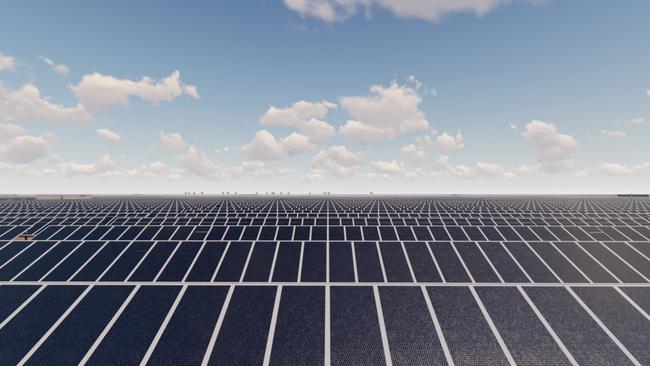New supplies of utility scale solar slashed by half in 2020: IEA report
Australia’s renewable industry faces a big slowdown amid grid connection issues and regulatory constraints.

Australia’s renewable industry faces a big slowdown amid grid connection issues and regulatory constraints with new supplies of utility scale solar slashed by half in 2020 and further falls tipped in the next two years, an International Energy Agency report shows.
Large-scale solar additions will fall to 1.3 gigawatts in 2020 from 2.6GW in 2019 while Australia’s overall solar capacity — combining utility, commercial and residential panels — is estimated to decline by about a third, even with installations of rooftop solar on household homes outstripping 2019 figures so far this year.
“Delays in grid connection approvals and new operational requirements have lowered project outputs, making the business case for multiple PV projects less attractive and reducing investor confidence,” the IEA says in its annual renewables report.
After a period of rapid growth, the completion of the 2020 renewable energy target will see solar face a more downbeat next few years before picking up again after 2023.
“Australia has already met its 2020 renewable energy target, resulting in an oversupply of generation certificates which reduces revenues and undermines the business case for new developments. Consequently, utility scale additions are expected to shrink further in 2021 and 2022.”
The nation’s wind generation also paints a mixed picture. While 2020 is forecast to be a record year with a 35 per cent jump in capacity to 2000 megawatts, a hefty drop in income and curtailment concerns will weigh on sentiment and lead to lower projected investment in 2021 and 2022.
Australia’s large-scale renewable energy target has given wind projects revenue from generation certificates although prices in that spot market fell last year as the number of accredited wind and solar projects exceeded the target this year.
“The forecast therefore expects wind additions to decline in 2021 and 2022 as a result of lower returns. Furthermore, potential connection delays and curtailment issues are raising project risks significantly, an element in the fact that no projects reached financial close in the second quarter of 2020.”
Despite the mixed outlook for Australia, the IEA says renewables are growing robustly around the world even as COVID-19 unsettles investors.
Renewables will account for almost 90 per cent of the increase in total power capacity worldwide in 2020 and will accelerate in 2021 to their fastest growth in the last six years.
Driven by China and the US, new additions of renewable power capacity worldwide will rise to a record level of almost 200GW this year. The jump is led by wind, hydropower and solar PV with wind and solar additions set to increase by 30 per cent in both the US and China as developers rush to take advantage of expiring incentives.
“Renewable power is defying the difficulties caused by the pandemic, showing robust growth while others fuels struggle,” said IEA executive director Dr Fatih Birol.
“The resilience and positive prospects of the sector are clearly reflected by continued strong appetite from investors — and the future looks even brighter with new capacity additions on course to set fresh records this year and next.”






To join the conversation, please log in. Don't have an account? Register
Join the conversation, you are commenting as Logout